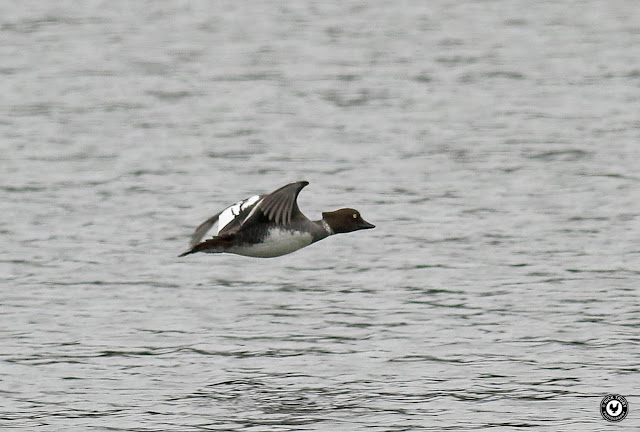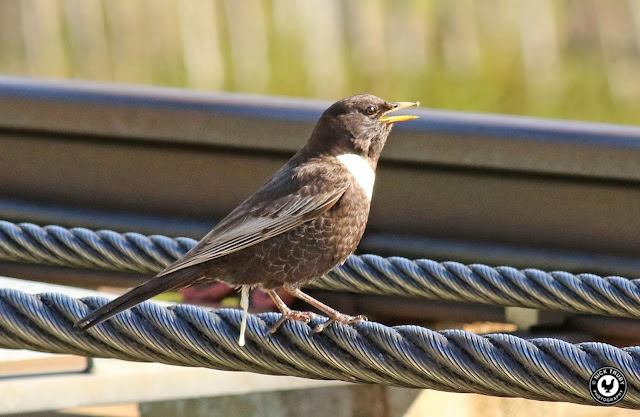We've been visiting the Strathspey region for over 20 years now and have garnered much information of places to go to almost guarantee seeing the Scottish specialities. Some of these sites are well known and are firmly on the "map", others less so, and at 08:30 on a warm but cloudy morning we headed to a small lochan just a few miles from our base to catch up with a rare breeding bird which, in the UK, only breeds in the Highlands of Scotland. Specific site details will be omitted (unless well known) since rare birds need space to breed successfully and increased visitor presence is a growing problem. We are very careful to only observe from a respectful distance and never encroach into the birds immediate habitat (which sadly cannot be said of many other people). The bird we came to see, the Slavonian Grebe, was spotted almost as soon as we'd left the car behind. Just one or two pairs breed here in most years and we are normally successful in seeing them. This time we saw two but presumably at least one of the pair would be sitting on eggs. On the previous Friday a superb summer plumaged Slavonian Grebe had been seen at Farmoor (typical!) and had offered very close views resulting in some local birders obtaining some crippling photos. The birds that swam on the lochan in front of us were much further away so my own images pale in comparison somewhat but I have had stonking views before so I wasn't too disappointed.
 |
| Slavonian Grebe |
 |
| female Goldeneye |
 |
| Mallard duckling chasing after mum! |
 |
| Sand Martin |
 |
| Slavonian Grebe |
Our next stop was at a nature reserve on the southern edge of Aviemore. Craigellachie NNR has become pretty famous as the breeding spot for a pair of Peregrine Falcons. Their eyrie is placed high up on a sheer rock face and as I walked underneath I noticed that there were now cameras installed overlooking the rock ledge. Not sure if they're there for security (a sad sign of the times, egg stealing is still rife) or whether they're serving as a webcam with footage beamed elsewhere. Anyway, in keeping with just about every other visit we've made here, the Peregrines were absent and nowhere to be seen. In fact I can only remember seeing one here once and that was years ago! But the information boards still proclaim that they're still breeding here so I guess we're just unlucky.
I discovered a cunningly disguised Chaffinch nest in the fork of a tree. The way in which the birds had used lichen to help their nest blend in with the tree trunk was quite brilliant. A young recently fledged Robin watched from a branch nearby but I very much doubt harboured the same admiration.
 |
| Spot the Chaffinch nest! |
 |
| Robin fledgling |
 |
| Tree Pipit |
 |
| male Pied Flycatcher |
 |
| male Wood Warbler |
 |
| Spotted Flycatcher nest (?) |
 |
| male Chaffinch |
 |
| Buzzard |
 |
| Osprey |
 |
| male Teal |
 |
| Curlew |
 |
| Mallard family |
Our final stop for the day was at the Cairngorm Mountain Ski Carpark primarily as a recce since we were planning on a mountain walk the following day. While gazing up the various tracks and wondering whether we'd make it up the "hill" (we do this every year but we always manage it) a fine male Ring Ousel appeared close to the stream that runs through the gully. It was feeding voraciously on earthworms and other bugs and we sidled a bit closer. We were pretty much alone too since by some stroke of luck (for us anyway) the Mountain Railway had closed the day before for a month for essential maintenance to take place so the usual coach loads of visitors that choose to take the train were absent. The Ring Ousel fed quite happily very close to our position until a group of returning walkers put it to flight.
 |
| male Ring Ousel |
 |
| male Ring Ousel |






















No comments:
Post a Comment